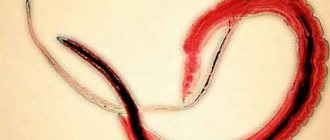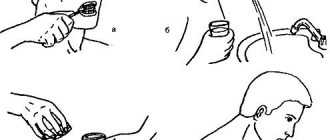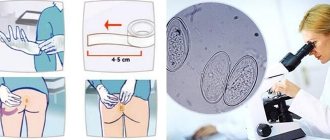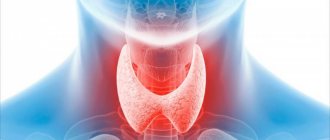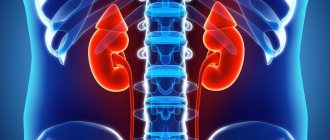Rules for collecting stool for studying intestinal microflora (dysbacteriosis)
General requirements:
Use only disposable containers provided by the laboratory. The container is sterile, does not require pre-treatment and is completely ready for use. Feces should be collected in the morning - after natural bowel movements. Sample preparation in advance is not permitted. Freezing or storing the sample in the refrigerator is not permitted. All examined patients, 1-3 days before taking the sample, should be on a diet that excludes the intake of foods that enhance fermentation processes in the intestines and lactic acid products, as well as alcohol and bacterial preparations (containing bifidobacteria, lactobacilli, E. coli). Conducting research and collecting material before starting treatment with antibiotics, antiseptics, antifungal drugs or no earlier than 2-3 weeks after the end of the course of treatment.
What you should definitely do:
Thorough toileting of the external genitalia and anal area. Pre-urinate. It is not recommended to collect feces from the toilet. Defecate in a dry, clean container - a vessel or a “night vase”. First you need to rinse well with soap and a sponge, rinse repeatedly with tap water, and then rinse with boiling water and cool. It is not permissible to treat the vessel with synthetic detergents. Transfer the stool sample with a special spoon mounted into the lid of a sterile container in an amount of no more than 1/3 of the container’s volume. Close the lid carefully.
The following must not be allowed:
You cannot conduct a stool examination earlier than 2 days after an enema, an X-ray examination of the stomach and intestines, or a colonoscopy. All examined patients, 1-3 days before taking the sample, should be on a diet that excludes the intake of foods that enhance fermentation processes in the intestines and lactic acid products, as well as alcohol and bacterial preparations (containing bifidobacteria, lactobacilli, E. coli). On the eve of the study, you should not take medications, including: laxatives; Activated carbon; preparations of iron, copper, bismuth; use fat-based rectal suppositories. Do not allow urine or water into the sample. Conduct stool examinations in women during menstruation.
Failure to comply with the rules for collecting, timing and storage of samples obtained for research leads to a negative result.
General analysis (coprogram)
The coprogram helps to assess the functioning of the gastrointestinal tract, identify inflammation, colitis of various origins and other pathologies.
Preparation for the analysis involves avoiding taking medications and using enemas. You also need to adhere to a special diet for 4-5 days. It involves avoiding exotic foods, fruits and vegetables with coloring pigments. These are tomatoes, beets, blueberries.
It is better to collect feces after a night's sleep. If this is not possible, the procedure should be performed in advance. The maximum allowable time before transportation to the laboratory is 8 hours.
In this case, the container with feces must be stored in the refrigerator. You must first urinate and perform genital hygiene. It is recommended to collect feces from different places, avoiding particles of undigested food.
Analysis of stool for coprogram
No special preparation is required.
When diagnosing certain diseases, a doctor may prescribe a special diet for several days.
3-4 days before the study, stop taking laxatives, castor and vaseline oil and stop administering rectal suppositories. Also, a few days before the examination, it is necessary to avoid taking iron and bismuth supplements.
It is unacceptable to send feces for examination in matchboxes or cardboard boxes, as this changes the shape and consistency of the feces and distorts the results of the analysis. Disposable plastic containers must be used.
Indications for use
Feces are the result of the body's vital activity. When food enters the oral cavity, it travels a long path that ends in the large intestine.
This is where feces are formed. At each stage, many biochemical reactions occur. A qualified specialist, considering solely the appearance of feces, can assess the performance of each organ of the gastrointestinal tract.
Stool testing is commonly used to diagnose gastrointestinal disorders, suspecting the presence of the following problems:
- oncological processes;
- dysbacteriosis;
- haemorrhoids;
- colitis and gastric ulcer;
- pancreatitis;
- cirrhosis;
- polypous formations;
- intestinal infections.
This is not a complete list of diseases. During an initial visit to a gastroenterologist, patients complain of discomfort in the epigastric area, constipation/diarrhea, and bloating. To quickly determine the cause of the disorder, a stool test is prescribed.
It is also actively used in pediatrics. For children, such diagnostics are required for allergies, suspected parasites and other digestive disorders.
What is a coprogram?
Coprogram is a method of laboratory examination of feces, which is prescribed to identify pathologies of the digestive system. The specialist conducts macroscopic, microscopic, chemical and physical analysis of feces, after which he makes a detailed description of the composition of feces.
What a general stool analysis shows:
- dysfunction of the pancreas, intestines, stomach;
- the presence of foci of inflammation in the gastrointestinal tract and their localization;
- disruptions in the process of digestion, movement of feces, and absorption of nutrients;
- dysbacteriosis;
- presence of parasites;
- colitis.
You can make a stool coprogram in a regular clinic for free, but to get a more accurate and detailed result, it is better to contact private laboratories, the average price is 370–420 rubles.
PCR studies
Examination of feces using the PCR (polymerase chain reaction) method guarantees reliable results. It is used to detect cells of certain pathogenic microbes and identify their varieties. Recommended if you suspect the presence of parasites in the body. It could be Helicobacter pylori, Giardia, Ascaris.
Preparation for the analysis does not have any specific features (following a diet, avoiding medications). It is recommended to collect material from several points.
An important advantage of such a study is the rapid result. Within 24 hours, the patient receives an answer about the presence or absence of pathogenic microflora.
Rules for storing stool before analysis
Before performing the test, you should check with your doctor about how to properly store the container with feces. Recommendations may vary depending on the initial diagnostic goals. It is often possible to collect material in the evening.
If a coprogram is required, you should have a bowel movement in the morning and immediately take the feces for examination. You can also do this in the evening by placing the container with the material in the refrigerator on the main shelf. If stored on the door or in the freezer, the result will be distorted. The maximum allowable time between defecation and transportation is 9 hours.
If testing for helminth eggs is carried out, feces can be stored in the refrigerator. It will be necessary to additionally use preservative components. They must be taken from the laboratory assistant in advance. It is better to deliver the material as soon as possible. Otherwise, the enzymes present in the excrement will destroy the helminths.
Bacteriology
Stool culture is recommended if there is a suspicion of the presence of certain groups of bacteria and helminths in the body. The procedure has no restrictions. It is performed regardless of age and health status.
There are 2 options for taking the test: self-emptying your bowels and collecting material from a health care worker. In the second case, the specialist uses tampons and loops.
The patient lies on his side on the couch and spreads his buttocks. At a depth of approximately 10 cm, the healthcare worker inserts a loop into the anus, through which material is collected from the intestinal walls.
Features of storing stool analysis in the refrigerator
The ideal option is to immediately send the biomaterial to the laboratory. It's not always possible to do this. In most cities, the emergency department is open only during the day, sometimes until lunch. Therefore, we have to postpone the delivery. How long you can store a stool test in the refrigerator before submitting it at home directly depends on the type of diagnosis.
Before delivery
It can be kept at room temperature for up to 180 minutes. But a lot depends on the type of analysis. To detect lamblia and diagnose dysbacteriosis, stool must be delivered to the laboratory in the shortest possible time. Maximum 120 minutes. You can’t even store it in the refrigerator for longer.
Didn't manage to deliver the material right away? We recommend that you tell your doctor honestly and reschedule your appointment. The result will be distorted, the laboratory will spend materials for analysis, and staff time. Everyone will be a loser.
On the eggworm
An eggworm test is taken for the treatment and prevention of helminthiasis. Often distorted results come. The reason is failure to meet deadlines. Many people are interested in the question: how long can stool be stored for eggworm analysis in the refrigerator? The answer is no more than 8 hours. Similar time for carrying out a coprogram.
How long can you store stool before testing?
The shelf life can reach half a day. This should include the time of delivery of the biomaterial to the laboratory. You cannot save longer.
For hidden blood
By analyzing biomaterials, internal bleeding is determined in the lower intestine, stomach, esophagus, and small intestine. Simply collecting feces is not enough. Before the procedure, the sick person adheres to a special diet. It starts three days before the procedure. The diet is adjusted according to the doctor’s recommendations. Meat, fish products, alcohol, and green vegetables are excluded.
Thorough preparation requires time and effort, so mistakes are excluded. It is important to collect stool by the required date and deliver it within four hours. Next comes internal changes. The test result is distorted. Temporarily after collection, the container should be stored in the refrigerator.
Before defecation, it is necessary to empty the bladder. The liquid should not get into the stool.
How to collect stool
It is better to collect stool from an adult and a child in the morning, immediately after the morning toilet, and try to deliver it to the laboratory as quickly as possible. You need to collect material from different parts of the feces, put them in sterile containers, or special disposable plastic containers, which can be purchased at the pharmacy. Evacuation should be natural; the use of laxatives, much less enemas, is prohibited.
In infants, it is not recommended to collect feces from the diaper; it is better to use a disposable diaper or medical oilcloth if the child has loose stools.
An older child needs to prepare a potty; first wash it with laundry soap or soda.
Important! When collecting material, you need to ensure that there is no urine in the stool.
How much feces do you need?
To carry out the analysis, you need to bring 15–20 g of material to the laboratory, which is approximately equal to 1 tsp. – this amount is quite enough to identify all the main indicators.
Is it possible to collect stool samples in the evening?
It is better to use a morning portion of feces for analysis, but if you are not sure that defecation will occur after waking up, you can collect the material in the evening; it should be stored in the refrigerator for no more than 10–12 hours, the container should be hermetically sealed.
Where should stool analysis be stored until the morning from the evening
Exclusively in the refrigerator compartment. We recommend sending the container immediately after collection. It is advisable to choose special sterile containers.
How to store stool for analysis in the evening:
- Biomaterial must be collected naturally. You cannot use enemas or laxatives for three days. It is prohibited to insert glycerin suppositories. All this distorts the result;
- The feces are immediately transferred to a sterile container. It is unacceptable to use dirty containers or large dishes.
- The lid must be screwed on tightly. Matchboxes are a thing of the past. Only use a sealed container.
- We recommend placing the jar on the middle shelf. Remove other products further. The compartments in the refrigerator door where lens solution, potassium permanganate, and iodine are stored are not suitable.
It is advisable to protect the container from sunlight. The jar can be wrapped in a dark bag. Place in another bowl. It will help lock the smell inside securely. Another important point is that the contents will not scare household members.

